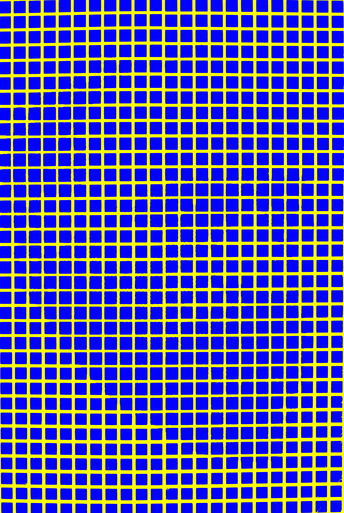Ludimar Hermann1838–1914
Hermann studied physiology under du Bois-Reymond in Berlin, but he did not always agree with his mentor on the details of nerve transmission. His subsequent expertise was in acoustics and it was through the study of sound that he discovered a visual illusion. The influence of sound on vision has been profound in one particular area – that of the Chladni figures. Moreover, their representation in print led to the description of the Hermann grid. Hermann is shown within his eponymous grid in which small spots are seen at the intersections of the yellow lines. John Tyndall (1820-1893) was also an authority on sound and, like Young before him, was Professor of Natural Philosophy at the Royal Institution. In 1867, Tyndall delivered eight lectures on sound at that institution. In them he illustrated the manner in which the acoustic figures were produced, and the principles upon which they were based. Tyndall’s Sound was translated into German as Der Schall and published two years later. When Hermann viewed the page containing an illustration of the Chladni figures he noted an unexpected visual effect: dark grey dots appeared at the white intersections, but not at the one fixated. It is now known as the Hermann grid and Hermann attributed the effect to simultaneous contrast. Despite the strength of the phenomenon, it evoked relatively little interest among visual scientists. One of the translators of Tyndall’s book was Helmholtz and he did not remark upon it, even after Hermann had described it. The phenomenon was returned to by Hering (1907) in his deliberations on simultaneous border contrast. He described both the Hermann grid and its converse, with a black grid on a white background. White squares on a black background yield light grey dots at the intersections; this is now called the Hering grid.
